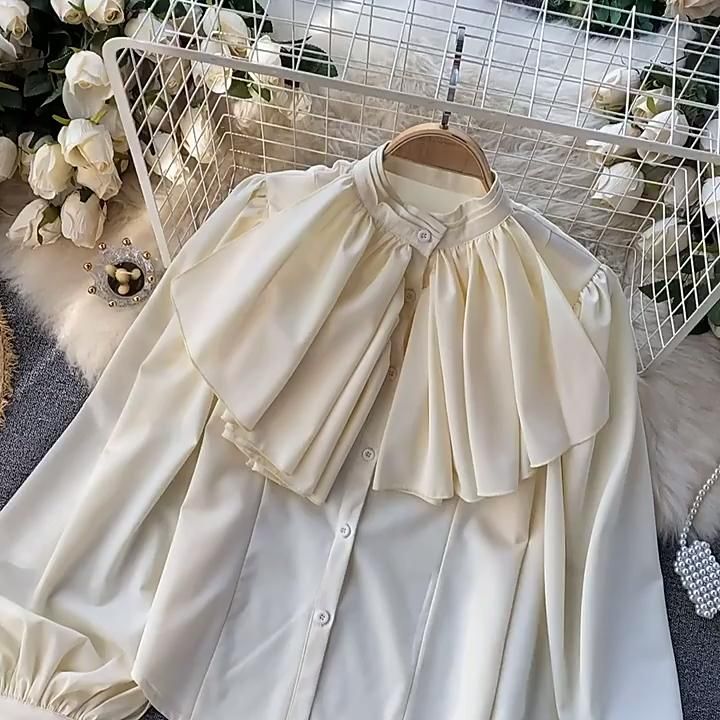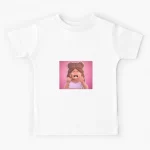In This Article
- 1 The History of the Puffy Shirt Episode
- 2 Design and Inspiration behind the Puffy Shirt
- 3 Seinfeld’s Puffy Shirt in Pop Culture
- 4 Key Scenes Featuring the Puffy Shirt
- 5 Impact of the Puffy Shirt on Fashion Trends
- 6 Celebrity Reactions and Homages to the Puffy Shirt
- 7 The Legacy of the Seinfeld Puffy Shirt in Television
The History of the Puffy Shirt Episode
The Seinfeld puffy shirt episode, simply known as ‘The Puffy Shirt’, is a classic piece of television history. This unforgettable episode first aired on September 23, 1993, during the show’s fifth season. It quickly became iconic, showcasing Jerry Seinfeld’s comedic brilliance alongside the memorable fashion statement.

The story behind the puffy shirt begins when Jerry unwittingly agrees to wear a designer’s elaborate and flamboyant shirt on a talk show. The designer, who happens to be Kramer’s low-talking girlfriend, crafts this unique garment which stands out due to its excessive frills and ruffles. Unaware of his commitment due to her quiet speech, Jerry finds himself in a comical predicament when presenting his ‘pirate’ look on television.
The episode cleverly spins a narrative around the shirt, pushing it into the spotlight and marking it a symbol of ’90s TV comedy. ‘The Puffy Shirt’ is not just remembered for the fashion faux pas it thrust into public view but also for the sitcom’s sharp wit and the cast’s timing in delivering humor. The phrase ‘but I don’t want to be a pirate’ that Jerry utters in frustration upon seeing the shirt is now eternally etched into the minds of Seinfeld fans everywhere.
This puffy shirt episode contributed significantly to the show’s legacy, highlighting how Seinfeld could take a simple concept and turn it into comedy gold. Its impact is such that the puffy shirt is not just a costume, but a symbol of ‘Seinfeld’s’ enduring relevance in pop culture and the show’s ability to make viewers laugh at the quirks of societal norms and fashion.
Design and Inspiration behind the Puffy Shirt
The Seinfeld puffy shirt was inspired by pirate attire. Its designer, a girlfriend of Kramer, envisioned something bold and flamboyant. She wanted the shirt to stand out during Jerry’s talk show appearance. The puffy shirt featured exaggerated frills and ruffles, mimicking a theatrical pirate look. This design choice was crucial. It helped create a humorous contrast with Jerry’s usual neat, casual style. The dramatic flair of the shirt, combined with its unintended comedic appearance on television, added an extra layer of humor to the episode. This design choice made the shirt a key element of the episode, turning it into a symbol of humorous fashion mishaps. Overall, the puffy shirt’s design and inspiration played a significant role in delivering the episode’s comedy and in making it memorable.
Seinfeld’s Puffy Shirt in Pop Culture
The Seinfeld puffy shirt became a cultural icon soon after its television debut. Memorable for its extravagant and unconventional style, this puffy shirt transcended its role in the sitcom and became a symbol in broader pop culture. It sparked conversations about fashion choices in TV shows and subsequently appeared in various forms of media.
Appearances in Other TV Shows
The influence of the Seinfeld puffy shirt led to its imitation and parody. It appeared in other TV shows, often as a nod to the legendary episode. For instance, characters in some sitcoms would wear similar exaggerated outfits during costume parties or episodes focusing on ’90s fashion, directly referencing the puffy shirt.
Influence in Fashion and Design
Beyond television, the puffy shirt influenced some fashion designers. They incorporated elements of its design into their collections, demonstrating the shirt’s impact on trends in the fashion industry. This echoed a blend of playful homage and genuine inspiration stemming from a comedic piece.
Merchandising
Merchandise related to Seinfeld’s puffy shirt also flourished. This ranged from replica shirts to themed merchandise like mugs and posters, showing Jerry in his puffy attire. Fans and collectors cherished these items, making them popular keepsakes. This merchandising further solidified the shirt’s status in pop culture.
Overall, the Seinfeld puffy shirt is more than a piece of costume; it is a touchstone in pop culture, influencing other media, fashion, and a dedicated line of merchandise. Its journey from a sitcom prop to a cultural symbol demonstrates its enduring appeal and iconic status.

Key Scenes Featuring the Puffy Shirt
The Seinfeld puffy shirt starred in many key scenes, making it unforgettable. Perhaps the most memorable is when Jerry first sees the shirt. His reaction, a mix of disbelief and comedic horror, perfectly captures the episode’s humor. This scene, where Jerry exclaims, ‘But I don’t want to be a pirate!’, became a classic moment in TV comedy.
Another significant scene is Jerry’s appearance on the talk show wearing the puffy shirt. His discomfort and the audience’s reactions added layers of humor to the episode. This appearance not only drives the plot but also highlights the clash between Jerry’s usual demeanor and the exaggerated fashion statement.
Moreover, the backstage discussions among Jerry, Elaine, and Kramer about the shirt offer a behind-the-scenes look at their dynamics. These interactions amplify the comedic effect of the puffy shirt and showcase the cast’s excellent timing and chemistry.
Each of these scenes plays a crucial role in highlighting the puffy shirt, making it a central element of the episode. They contribute significantly to the shirt’s iconic status in popular culture.
Impact of the Puffy Shirt on Fashion Trends
The Seinfeld puffy shirt left an unexpected imprint on fashion trends. Its presence on one of television’s most popular shows thrust it into the spotlight, inspiring not just laughs, but serious sartorial discussions. Designers and fashion enthusiasts found themselves revisiting the bold style of the era, and some even incorporated puffy elements into their work. The exaggerated sleeves and ruffles provided a whimsical, yet charming throwback to a more romantic period in fashion history. While the shirt began as a joke, its influence could be spotted on runways with collections featuring voluminous silhouettes and theatrical flair. High-fashion brands sometimes embraced the ‘pirate’ aesthetic as a nod to the Seinfeld puffy shirt, blending past designs with modern trends. It wasn’t long before ruffle-laden shirts began appearing in retail stores as a quirky, vintage-inspired option. The appearance of the puffy shirt in Seinfeld gave it a unique position as both a pop culture icon and a fashion influencer. Its impact was a testament to the power of television in shaping and reflecting the evolution of style. From costume to fashion statement, the puffy shirt remains a memorable piece of ’90s nostalgia.
Celebrity Reactions and Homages to the Puffy Shirt
The ‘Seinfeld puffy shirt’ has not only charmed fans but has caught the eye of celebrities too. Many stars have shared their amusement and appreciation for this distinctive piece of television fashion. Notably, their reactions have often been public, sharing a laugh with fans over social media or in interviews. Some have even paid tribute by donning puffy shirts themselves, displaying a playful acknowledgment of the shirt’s place in TV lore.
Celebrities have embraced the shirt’s legacy by incorporating it into skits or comedy routines. This trend shows the shirt’s wide-reaching impact beyond just a prop—it’s a piece of comedic heritage. The humor and nostalgia tied to the puffy shirt have enabled it to become an emblematic item, capable of sparking a shared moment of joy amongst those in the entertainment industry. Whether through a quick costume change or a lighthearted reference, the homage is clear.
Furthermore, celebrities occasionally use the puffy shirt as a symbol of ’90s television nostalgia. Events like throwback parties or retro-themed photo shoots have featured the famous frills. It speaks to their recognition of the Seinfeld puffy shirt’s place in the pantheon of memorable TV moments. The puffy shirt, once a subject of fictional ridicule, has transcended to become an endearing icon, applauded by those who shape popular culture.
In essence, the Seinfeld puffy shirt has transcended its original comedic purpose. Celebrities continue to acknowledge its uniqueness, ensuring the shirt’s comedic appeal lives on. By doing so, they play a part in cementing the shirt’s ongoing legacy in the world of television and fashion satire.

The Legacy of the Seinfeld Puffy Shirt in Television
The Seinfeld puffy shirt inspired many. Its legacy goes beyond the classic episode. TV shows have often paid tribute to it. Designers reminisce about its impact on fashion. It’s a symbol of the ’90s era. Even today, it’s a piece people recall with laughter. This shirt shows how TV can influence fashion trends. It proves comedy’s power in shaping pop culture. Fans remember the puffy shirt fondly. It represents a creative peak in sitcom history.
The puffy shirt’s effect on other series is notable. Some have featured similar garments in jest. This is a testament to its enduring fame. It’s more than a prop—it’s a touchstone of its time. The shirt highlighted the talent behind ‘Seinfeld’. The skillful blend of humor and style made it stand out. This blend set the stage for future sitcom fashion gags.
The puffy shirt has become a go-to reference for ’90s culture. It’s seen in costumes, parodies, and on social media. When people think of ‘Seinfeld’, they often picture the puffy shirt. This garment is etched into the collective memory of viewers. It continues to be a source of entertainment and nostalgia. The Seinfeld puffy shirt lives on as a cultural icon.
Seinfeld’s ability to turn a simple shirt into a phenomenon is remarkable. The puffy shirt’s journey from a one-episode wonder to a recognized symbol is unique. It highlights the merging paths of television, fashion, and comedy. Even decades later, its legacy endures, captivating new fans and delighting old ones. The Seinfeld puffy shirt remains an unforgettable part of television legacy.


